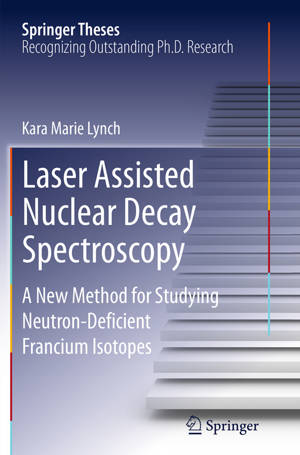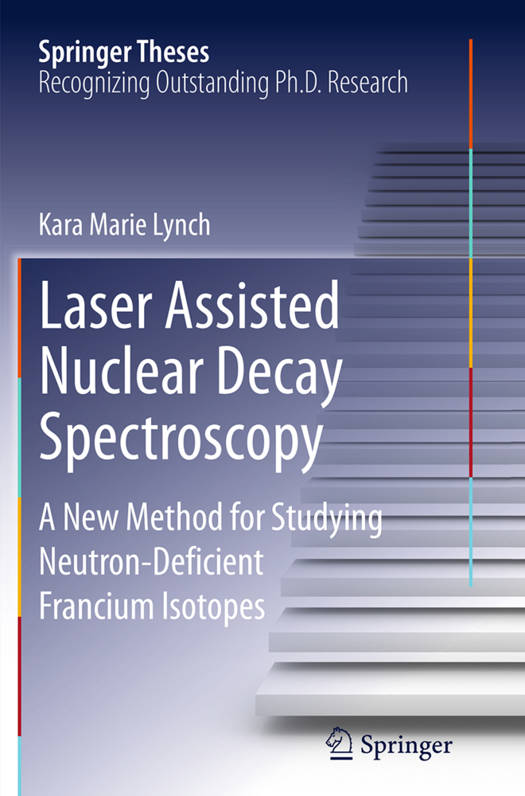
Door een staking bij bpost kan je online bestelling op dit moment iets langer onderweg zijn dan voorzien. Dringend iets nodig? Onze winkels ontvangen jou met open armen!
- Afhalen na 1 uur in een winkel met voorraad
- Gratis thuislevering in België vanaf € 30
- Ruim aanbod met 7 miljoen producten
Door een staking bij bpost kan je online bestelling op dit moment iets langer onderweg zijn dan voorzien. Dringend iets nodig? Onze winkels ontvangen jou met open armen!
- Afhalen na 1 uur in een winkel met voorraad
- Gratis thuislevering in België vanaf € 30
- Ruim aanbod met 7 miljoen producten
Zoeken
Laser Assisted Nuclear Decay Spectroscopy
A New Method for Studying Neutron-Deficient Francium Isotopes
Kara Marie Lynch
€ 105,45
+ 210 punten
Uitvoering
Omschrijving
This work details an application of collinear resonance ionization spectroscopy for the separation of short-lived isomeric states and their subsequent study with decay spectroscopy. It reports the successful construction of a novel decay spectroscopy apparatus that can operate at pressures below 1 x 10^-9 mbar. The method is demonstrated by separating the nuclear ground and isomeric states of 204Fr and performing alpha-decay spectroscopy. An equivalent mass spectrometer would require 4.6 million times as much resolution to achieve the same result. This work unambiguously confirms the existence of a second isomeric state in 204Fr. The author also demonstrates the effectiveness of this method for laser spectroscopy and identification of hyperfine-structure components with energy tagging. This method was successfully used in 202Fr to identify ground and isomeric states. The measurement of 202Fr reported in this thesis demonstrates a factor of 100 improvement in sensitivity compared to state-of-the-art fluorescence techniques. The work reported in this thesis won the author the IOP Nuclear Physics Group Early Career Prize.
Specificaties
Betrokkenen
- Auteur(s):
- Uitgeverij:
Inhoud
- Aantal bladzijden:
- 131
- Taal:
- Engels
- Reeks:
Eigenschappen
- Productcode (EAN):
- 9783319361383
- Verschijningsdatum:
- 10/09/2016
- Uitvoering:
- Paperback
- Formaat:
- Trade paperback (VS)
- Afmetingen:
- 156 mm x 234 mm
- Gewicht:
- 217 g

Alleen bij Standaard Boekhandel
+ 210 punten op je klantenkaart van Standaard Boekhandel
Beoordelingen
We publiceren alleen reviews die voldoen aan de voorwaarden voor reviews. Bekijk onze voorwaarden voor reviews.











